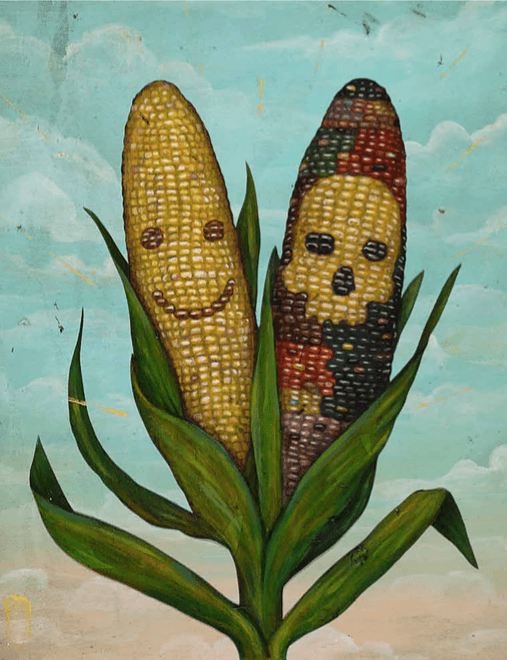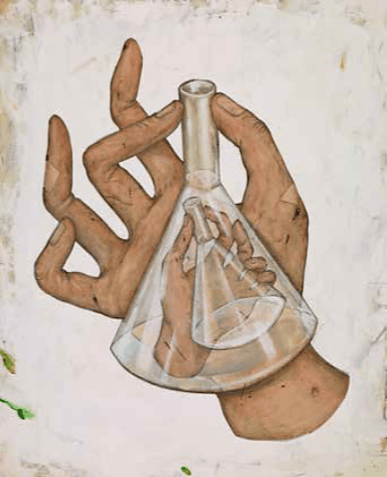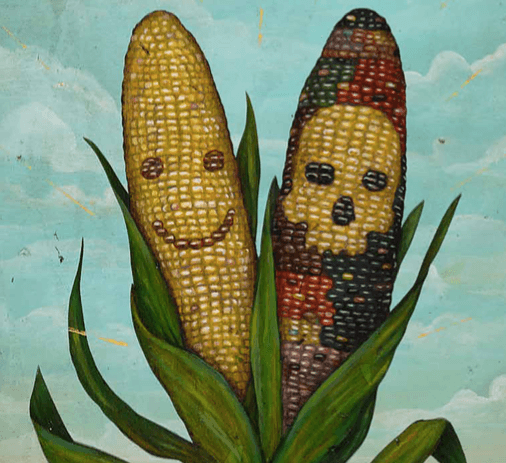
(This article first appeared in the 2017 Techonomy print and digital Magazine.)
The general public in the United States and around the world has a headscratchingly complex set of attitudes about the science of genetic modification. People are so opposed to foods that have been developed using targeted genetic approaches, better known as GMOs, that such food has been banned in some countries and is under dispute in many others. Meanwhile, decades of studies have found zero evidence that GMO foods harm people. But paradoxically, when it comes to editing human genomes—particularly for the purpose of possibly curing disease—many in the general public are eager to press forward. Yet in this area scientists themselves call for caution, out of concern for how little is known about the long-term ramifications.
For the first time in history we are equipped with tools to genetically alter ourselves and the organisms around us. But what’s scientifically possible is rapidly outpacing society’s ability to make informed decisions. Given the social and scientific complexities, where should we push ahead—or hold back?
One obvious cause of the public’s unpredictable and sometimes irrational reaction to genetic modification is ignorance, a result of the poor state of basic scientific education. In a survey of more than 1,000 Americans conducted by Oklahoma State University, 82% of respondents supported mandatory labeling for foods produced with genetic engineering. But nearly the same amount, 80%, supported mandatory labeling for foods containing DNA. How can we look to the public for useful input about DNA modification when most people don’t even know that all foods contain DNA.
Opposing genetic modification is not ignorant or wrong per se, but it’s hard to have an informed debate when so many opinions are formed without an understanding of the science or with religious bias. At this point the possibilities in genetic modification are moving so quickly even experts have trouble keeping up.
Genetic modification takes many forms. Some methods have been in use for hundreds of years, while others go so far as to design completely new organisms. Attempts to modify natural species began with plants and animals, primarily crops and livestock. Much of the history of agriculture has involved breeding different strains of a plant or animal to produce more desirable traits. Today, these same approaches are used in conjunction with cutting-edge biotech programs to make crops and livestock more productive and better able to withstand climate changes. Maize, rice, coffee, and other crops are being improved in ways that most people would consider natural.
But take this approach a step further—say, introducing a hardier gene from a related plant species using genetic targeting, rather than traditional breeding—and suddenly you’ve reached the territory of GMOs, or genetically modified organism. GMOs are developed in labs where scientists turn a gene on or off, or splice in a gene from another organism. GMOs include tomatoes with longer shelf lives and pest-resistant corn that needs less toxic pesticides. Despite such advantages, fears of what the public perceives as “Frankenfoods” have fueled much outcry. But in countries where feeding rapidly growing populations is a challenge, GMO crops and livestock have been more readily accepted.
Many health experts believed people would more likely accept GMOs when there were clear-cut medical benefit, but what happened during the 2016 Zika epidemic challenged that theory. As the mosquito-borne virus marched towards U.S. shores, leaving thousands of babies with microcephaly in its wake, scientists suggested releasing genetically modified mosquitoes. They believed that might stem the epidemic by preventing mosquitoes known to carry Zika from successfully reproducing. In the Florida communities where these releases were considered, people mobilized quickly to protest. Placards in yards announced: “No consent to release of genetically modified mosquitoes,” while town meetings echoed with objections. The fear of Zika, it turned out, paled in comparison to the fear of unintended consequences from GMO mosquitoes.
 So far, editing genes in bacteria hasn’t provoked a similar public outrage. With the right genetic tweaks, bacteria can become tiny factories, churning out everything from human insulin to spider silk to compounds needed to make paint. Such work is already widespread. But eager to avoid having it tarred by the GMO brush, the industries involved generally try to associate these techniques with fermentation, a natural process in which bacteria convert something we don’t care about into something we do.
So far, editing genes in bacteria hasn’t provoked a similar public outrage. With the right genetic tweaks, bacteria can become tiny factories, churning out everything from human insulin to spider silk to compounds needed to make paint. Such work is already widespread. But eager to avoid having it tarred by the GMO brush, the industries involved generally try to associate these techniques with fermentation, a natural process in which bacteria convert something we don’t care about into something we do.
The gene editing technique that has gotten the most attention recently, known as CRISPR, is based on a naturally occurring mechanism that protects bacteria from invaders. Its invention represents a major step forward in what genetic science can achieve. In the lab, it allows scientists to edit virtually any genome with breathtaking specificity by targeting a certain genetic sequence and swapping in a new one. In a remarkably short time, CRISPR has gone from concept to widely utilized method for introducing targeted genetic changes in plants, animals, and bacteria.
In this arena, scientists are expressing more alarm than the public, especially regarding CRISPR’s use to modify humans. In meetings and editorials, leading researchers have until recently urged a moratorium on using CRISPR to edit human genes that could be passed on to subsequent generations, though some scientists in China and other countries were nonetheless moving ahead. (In February for the first time, a panel representing the U.S. National Academy of Sciences and the National Academy of Medicine cautiously expressed a willingness to allow experiments to proceed, even as they acknowledged the topic is “highly contentious.”)
While editing genes to cure someone of a disease is considered acceptable, inducing changes that become heritable is, quite frankly, freaking many scientists out. After all, these kinds of modifications could alter the course of human evolution or lead to any number of unforeseen consequences. “The overriding question is when, if ever, we will want to use gene editing to change human inheritance,” said Nobel laureate David Baltimore in a 2015 meeting.
The biggest editing feat of all would be to create an entirely new genome—a man-made organism— and scientists are already making significant progress. In the past few years, researchers at the J. Craig Venter Institute in Rockland, Maryland and La Jolla, California assembled DNA into a novel bacterial genome and inserted it into a cell, essentially booting up a new organism that then successfully reproduced.
Other scientists have rallied the research community to launch a considerably more ambitious project to create an entire synthetic human genome. Such a man-made DNA sequence could theoretically boot up the world’s first “designed” human. Led by futuristic thinkers like Harvard professor George Church and Autodesk research scientist Andrew Hessel, the idea is that now that we can read a genome (that is, sequence it), the next step is to write one. In a publication announcing the idea, the scientists explained that they believe the project could address many health challenges even as they welcome the inevitable discussion about possible regulation. They argue that if they were to succeed it could enable us to grow human organs for transplantation, engineer resistance to cancer and viruses, and accelerate vaccine development.
The scientific push to figure out what’s possible in editing genomes has yet to sufficiently wrestle with the moral questions around whether we should. Among the conundrums: will editing or designing human genomes contribute to inequality by creating a group of genetically improved people? And how much should public opinion matter if the public continues to be uninformed? At this point, it’s to proceed with genome editing for any human health purpose when even researchers themselves widely disagree. No doubt each case will need to be considered one by one.
While ethicists and lawmakers figure out what to debate, it’s likely that scientists will continue to surprise the public with new revelations about what is and isn’t possible. In the meantime, the only thing we can say for sure is that the future of both genome editing and public attitudes toward it is wildly uncertain.
Contradictions Abound in Public Opinions about Genetics
People are so opposed to GMOs that such food has often been banned, though studies find zero evidence it harms people. But paradoxically, when it comes to editing human genomes, many are eager to press forward. Yet here scientists themselves mostly call for caution, because little is known about long-term ramifications.

















